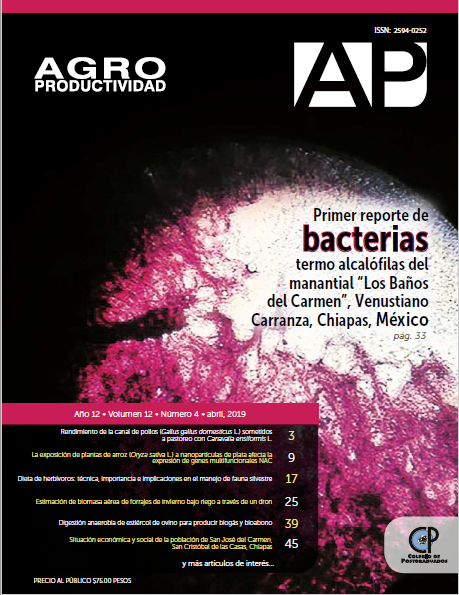Estimación de biomasa aérea de forrajes de invierno bajo riego a través de un dron
Main Article Content
Keywords
3D modeling; linear regression; precision agriculture; remote sensing; sensors.
Abstract
Objective: To develop a procedure to estimate biomass with digital images captured from drone and 3D modeling (ID-Dron-3D) applicable in forage alfalfa (Medicago sativa L.) and oats (Avena sativa L.).
Design/methodology/approach: With a digital camera coupled to the drone, images were obtained before harvesting the crops, which were processed with software to then estimate biomass volume. In each crop, height of the plant and harvested area, apparent and real volume of biomass, and weight of fresh and dry biomass were measured.
Results: Based on the regression analysis, linear models were obtained at one (p<0.05) to predict: fresh biomass in oats (R2 = 0.70) and alfalfa (R2 = 0.47); and dry biomass in oats (R2 = 0.78) and in alfalfa (R2 = 0.31) by ID-Drone-3D.
Limitations on study/implications: Considering the R2 of the models obtained, the results in the forage oats were better, compared to those detected in alfalfa, which may be due to the greater variability of the plant cover, since, in some sampling units, the plants of Alfalfa did not completely cover the soil.
Findings/conclusions: The yield of fresh and dry biomass of both crops was significantly correlated with their respective apparent volume estimated with digital images taken from a drone and its 3D processing (ID-Dron-3D).

